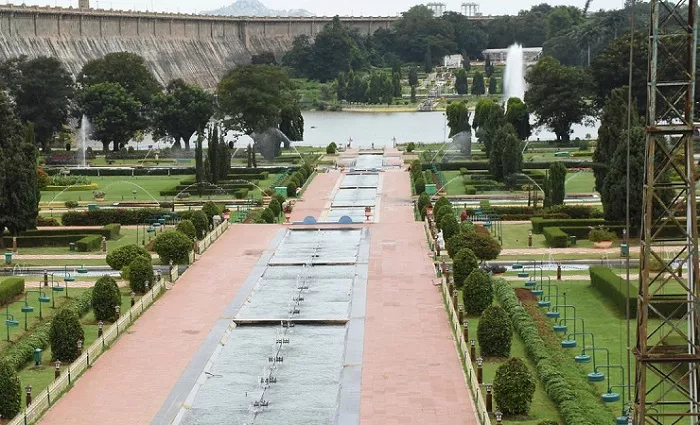The Karnataka High Court has issued notices to both the central and state governments over a controversial proposal to develop a Disneyland-style amusement park near the Krishnaraja Sagar (KRS) dam, intensifying scrutiny over the project’s feasibility and potential risks.
The project, a Public-Private Partnership (PPP) venture, plans to span 198 acres with an estimated investment of ₹2,663 crore. Key features of the proposed park include roller coasters, water rides, a statue of Goddess Cauvery, and a penguin park. However, the initiative has drawn legal challenges from public interest petitioners who argue that the project site lies within a 20-kilometre protected radius around the century-old dam, where commercial development is restricted.
According to the petitioners, the government has not obtained mandatory approvals from the National Dam Safety Authority, nor has it conducted public consultations. The petition also highlights the deteriorating condition of the adjacent Brindavan Gardens, a heritage site, suggesting that funds would be better spent on its restoration rather than on new construction that could jeopardize public safety.
Engineers and environmentalists warn that the dam, constructed between 1911 and 1932, may not withstand the strain from intense construction activity. Concerns include potential damage from pile-driving and deep excavations, which could exacerbate existing vulnerabilities such as weakened sluice gates and masonry seepage. The anticipated daily influx of thousands of visitors and the operation of high-decibel rides could further destabilize the dam’s structure.
The environmental ramifications are equally troubling. The amusement park is expected to generate substantial waste, including plastic and chemically treated water from its attractions. Experts caution that such pollutants could enter the Cauvery River, impacting water quality downstream in Mandya—Karnataka’s agricultural heartland—and threatening crop yields and the livelihoods of local farmers.
Critics argue that the project reflects misplaced priorities at a time when farmers in the Cauvery basin are demanding investment in canal modernization and water storage improvements. They contend that such critical infrastructure needs should take precedence over entertainment ventures that pose potential hazards to public safety and environmental sustainability.
There is growing consensus among activists and citizens that if an amusement park is to be developed, it should be situated away from vital water reservoirs to eliminate risks to key infrastructure and human life.
With the High Court now involved, the future of the proposed park remains uncertain. Stakeholders await further legal and governmental responses as calls grow louder to abandon the plan in favor of more sustainable and safer alternatives.


